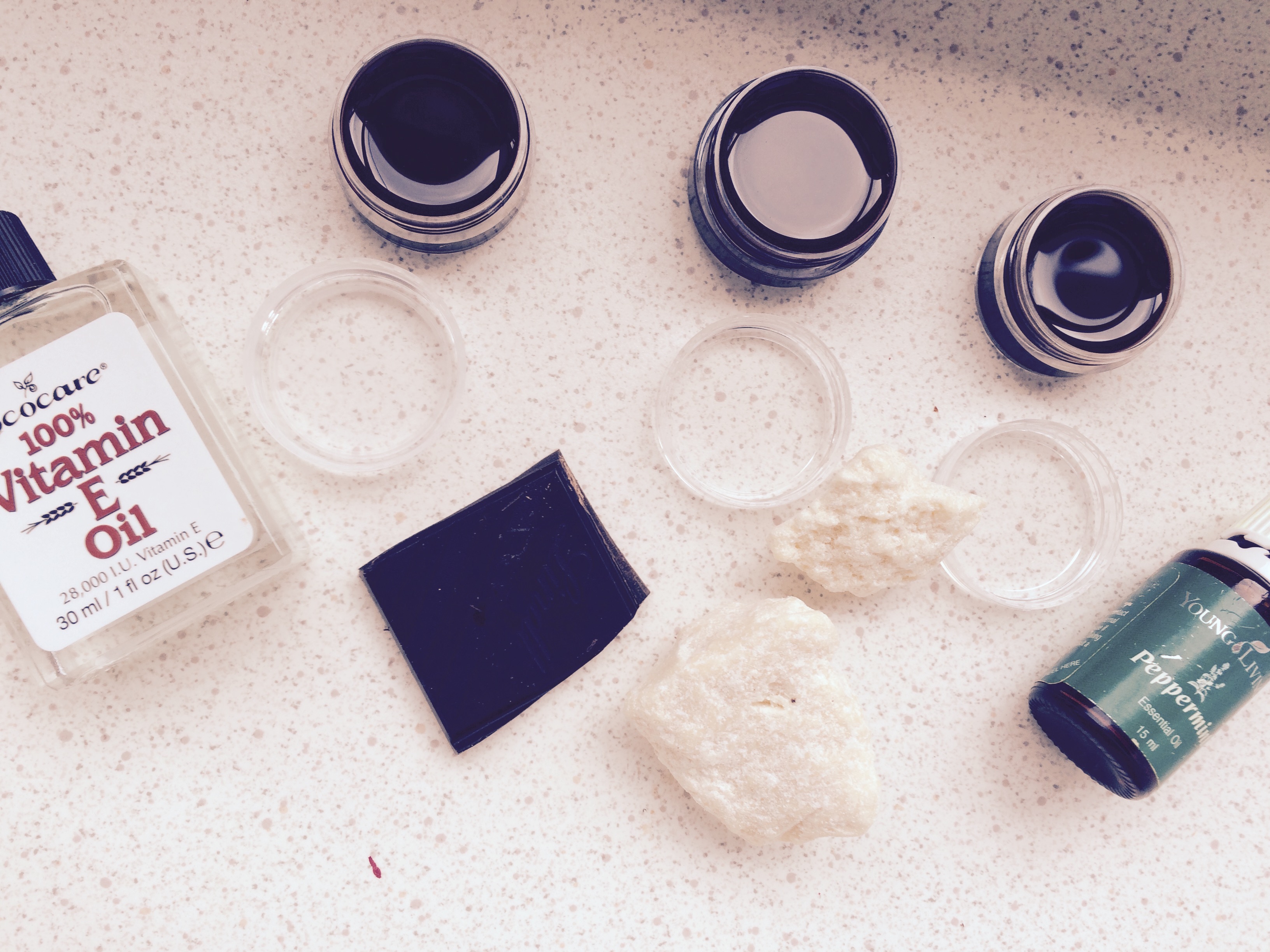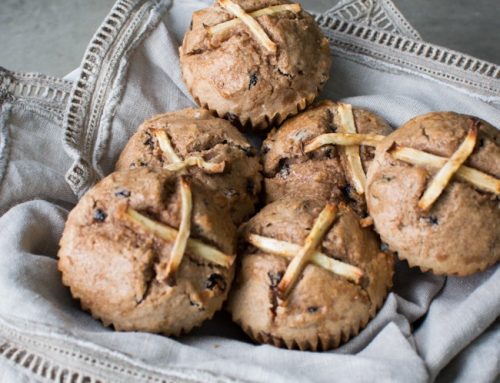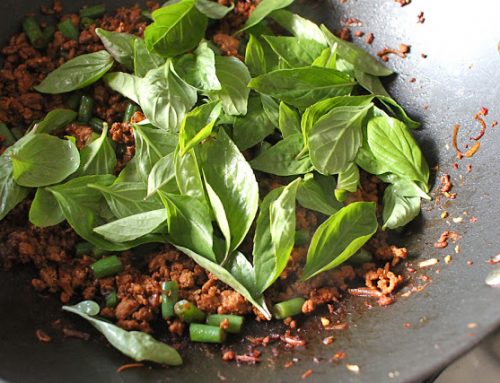I have a confession. I’m a Vaseline addict…or, I used to be. I loved to smother it on my lips, stuff the  cracks of my heels with the stuff, even use it as a greasy-weasy hand lotion. I thought it was ok, it didn’t smell like much, it wasn’t full of funny colours, it didn’t have a huge list of ingredients. It could even be used as nappy rash – if it was safe enough to use on a baby’s butt, it had to be ok, right? When I started going chemical-free, I knew I had to look at my beloved Vaseline. It was the sole thing that I was putting on my lips (which inevitably ends up in my mouth), so I knew it was something to scrutinise. It was also something I was putting on my dry, damaged, cracked skin (which was some times bloody), so of course it was going straight into my bloodstream. I was pretty grossed out to find that petroleum jelly (Vaseline) comes from the same place as gasoline. It’s a byproduct of the oil industry, created during the refinery of crude oil. I kind of already knew this (it was after all called PETROL-eum jelly), but I think I was in denial because me and Vas had been together for so long. We were besties, confidants, lip-kissers. But what I didn’t realise was just how two-faced my beloved Vaseline was. While it made my lips and skin feel soft and hydrated, this was a false sense of nourishment. Petroleum jelly actually does nothing to nurture, heal or restore natural moisture of the skin. It slows cellular regeneration, which can damage collagen, elastin and connective tissue and contributes to the appearance of ageing. It also forms a seal over the skin, which disrupts the bodies process of eliminating toxins through the pores, potentially trapping them under the skin. Apparently petrolatum is also a probable carcinogenic, and has been banned in the use of cosmetics in some countries.
cracks of my heels with the stuff, even use it as a greasy-weasy hand lotion. I thought it was ok, it didn’t smell like much, it wasn’t full of funny colours, it didn’t have a huge list of ingredients. It could even be used as nappy rash – if it was safe enough to use on a baby’s butt, it had to be ok, right? When I started going chemical-free, I knew I had to look at my beloved Vaseline. It was the sole thing that I was putting on my lips (which inevitably ends up in my mouth), so I knew it was something to scrutinise. It was also something I was putting on my dry, damaged, cracked skin (which was some times bloody), so of course it was going straight into my bloodstream. I was pretty grossed out to find that petroleum jelly (Vaseline) comes from the same place as gasoline. It’s a byproduct of the oil industry, created during the refinery of crude oil. I kind of already knew this (it was after all called PETROL-eum jelly), but I think I was in denial because me and Vas had been together for so long. We were besties, confidants, lip-kissers. But what I didn’t realise was just how two-faced my beloved Vaseline was. While it made my lips and skin feel soft and hydrated, this was a false sense of nourishment. Petroleum jelly actually does nothing to nurture, heal or restore natural moisture of the skin. It slows cellular regeneration, which can damage collagen, elastin and connective tissue and contributes to the appearance of ageing. It also forms a seal over the skin, which disrupts the bodies process of eliminating toxins through the pores, potentially trapping them under the skin. Apparently petrolatum is also a probable carcinogenic, and has been banned in the use of cosmetics in some countries.
Let’s just say…these were some pretty good reasons for me to give up my trusted tub of Vas and search for something natural. While the Vas offered a temporary hit of moisture to my dry lips and cracked skin, the fact that my skin wasn’t healing (and I used Vas ALL the time) made me question whether the jelly stuff was actually doing any good – and maybe, actually, it was preventing my skin from repairing itself.
But what about other types of commercial lip balms? Are they safe? Unfortunately many lip balms are full of ingredients that are not good for your lips and can even be considered toxic.
What ingredients should you avoid in a lip balm?
- I’ve said it already, but I’ll say it again: Petrolatum (or petroleum) — Derived from crude oil and its processing causes impurities that could be possible carcinogens. And, petrolatum doesn’t let your skin breathe. So by applying it to your lips, you’re actually suffocating them rather than moisturising and helping them heal.
- Parabens (like methylparaben, ethylparaben, propylparaben, butylparaben and isobutylparaben) — Preservatives in skin and hair care products that mimic estrogen in the body. Estrogen interruptions have been linked to breast cancer and reproductive issues.
- Dyes and Fragrances — Many dyes and fragrances used to give lip balms (and lipstick) their colors also contain metals like aluminum and sometimes lead. They can irritate your lips rather than heal them. And these heavy metals can build up in our bodies and become VERY toxic.
- Salicylic Acid — This common acne fighting ingredient can cause your lips to dry out and peel, which is probably the opposite of what you’re trying to accomplish when you apply lip balm, right?
So what ingredients DO you want in a lip balm?
- Carrier Oils & Butters — Look for ingredients like natural (organic is best), unprocessed oils –like coconut oil or almond oil– to truly add moisture to your lips.
- Wax — Natural waxes, like sustainable-sourced beeswax, act as natural protectors. So once you’ve added moisture, the wax will help seal it in. It also gives consistency to the balm.
- Vitamin E — Vitamin E acts as a powerful antioxidant and help fix previous sun or wind damage to your kisser. This should be the last ingredient in an ingredient list, as too much can be irritating, but a small amount is helpful.
- Essential Oils – Lastly, pure, therapeutic-grade essential oils (like Young Living) offer healing properties that can help replenish your lips. They are strong antioxidants that can help with healthy skin regeneration. They also kill of bacteria that might be on your skin, or that might grow in your tub of precious balm.
 At our DIY Chemical-Free SKINCARE workshop (on Thur 29 Sept, 6:30pm at Devonport Community House), we’ll be making our own natural and fully edible nourishing choc-mint lip balm. I LOVE this stuff! I’ve been smothering it on my lips all day every day (and oops, sometimes it might just end up on my lurking tongue!). For a chocolate lover, this balm is a divine chocolatey-smelling (and tasting!) treat. It also has a hint of peppermint oil which adds a minty, tingly sensation to the lips. This helps keep me perky, and my lips oh-so-puckery (lol!).
At our DIY Chemical-Free SKINCARE workshop (on Thur 29 Sept, 6:30pm at Devonport Community House), we’ll be making our own natural and fully edible nourishing choc-mint lip balm. I LOVE this stuff! I’ve been smothering it on my lips all day every day (and oops, sometimes it might just end up on my lurking tongue!). For a chocolate lover, this balm is a divine chocolatey-smelling (and tasting!) treat. It also has a hint of peppermint oil which adds a minty, tingly sensation to the lips. This helps keep me perky, and my lips oh-so-puckery (lol!).
If you’re not that into chocolate (weirdo you! Haha, jokes), I’ll also be offering a nourishing, natural lip balm without the chocolate. My sister actually used this non-chocolate recipe at her daughter’s birthday party. All the girls got to make their own lip balm. Most of them chose lavender oil (GREAT for the skin), and some of the girls had really red, chapped lips, so my sister added frankincense oil to their balms. Frankincense is an amazing healer (of pretty much everything!), so that combined with lavender would really work to heal sore lips. Some of the girls’ mums called my sister up the next week to say can they PLEASE get more of that lip balm off her!!! They had tried all sorts of lips balms on their daughters’ lips, and nothing had worked to heal them. Apparently the girls’ lips had completely healed after using my sister’s homemade essential oil-infused balm, after months and months of sore, chapped lips. Yay!
*****DIY Chemical-Free SKINCARE Workshop******
When: Thur 29 Sept, 6:30pm-8:30pm
Where: Devonport Community House (10 Morris Street)
Cost: $30 (to make and take five skincare products)
During the workshop you will make:
Honey Lavender Face Wash – 250ml
Anti-Wrinkle Serum – 25ml
Skin Perfecting Face Cream – 120ml
Lemongrass & Ginger Salt Scrub – 250ml
Choc Mint Lip Balm – 10ml
All of the products will be made from natural ingredients, including 100% pure, therapeutic-grade Young Living essential oils. All ingredients and containers for the products will be supplied. You won’t believe how quick and easy it is to make your own skincare products! And it’s also super cheap – it is literally only $30 to make five high-quality, natural products, including the cost of the containers.
As spaces are limited, we would appreciate that you book in and pay prior to the workshop.
Looking forward to seeing you there!
Filly








Leave A Comment